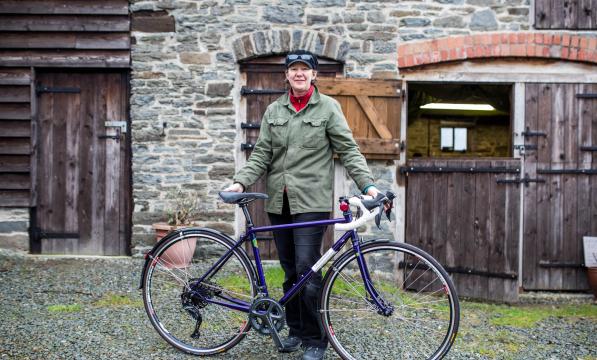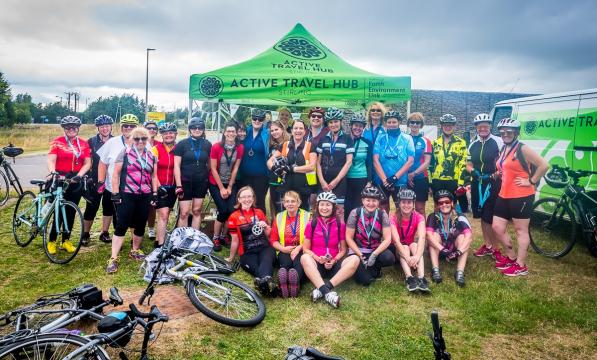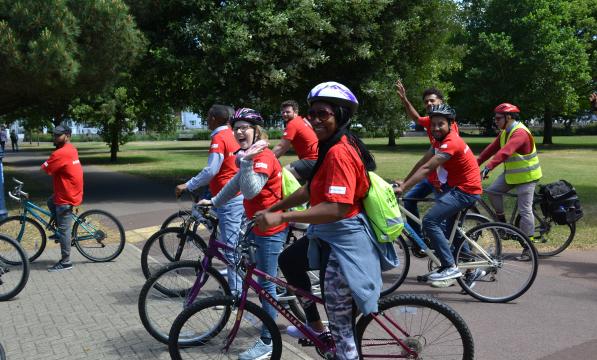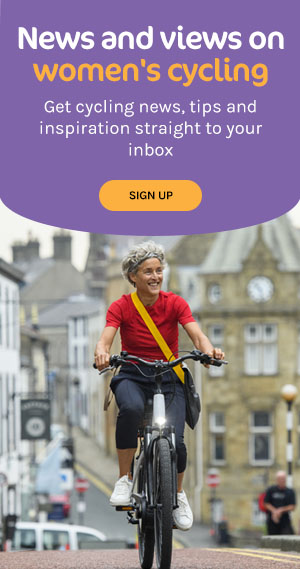How to: Run bike rides for women

Why put on cycling activities for women?
Only around 30% of Cycling UK’s members are female, and women still only make up about a quarter of cyclists as a whole in UK. But women have the most to gain from taking part in a fun, healthy and sociable activity like cycling.
This is a large topic to cover. There are a range of issues that may limit the number of women compared to men who regularly cycle, whether that be for making utility trips to the shops or work or for leisure and enjoyment. The reasons why women don't cycle more are complex and include, among others, cultural, social, physiological and psychological barriers, whether real or perceived. Generally women tend to earn less and have less leisure time, so are less likely to be able to buy a bike and have time to ride it.
However, increasing numbers of women in the UK are active cyclists, demonstrating that with a little extra encouragement, many will take it up and continue riding for years.
A great example of cycle rides that have worked well to encourage women who are beginners is Belles on Bikes an initiative started by Cycling UK in Scotland quite a few years ago. It has led to hundreds of women participating in regular social cycling all around the country and the groups are now run independently. We also encourage all our clubs and groups to put on female-friendly and women only rides.
Even among women who are already committed cyclists, female-oriented rides and events are extremely popular. Feedback from women-only events shows many enjoy the camaraderie and friendship just as much as the technical or physical challenges.
Please note that much of this advice may also be useful for encouraging more male, transgender or non-binary people to enjoy cycling, too, so use it as you see fit.
How to organise a bike ride for women
Women’s rides are not much different from any other ride in terms of general organisation, but you may want to particularly consider the following areas, especially for women new or returning to cycling after a long break:
- A female ride leader, where available, is preferable for a female-friendly ride or group.
- Make sure that riders know before and at the start that nobody will be dropped or left behind. Appoint a sweeper to ensure riders at the back are not on their own all the time
- Before you set off check that bikes are roadworthy
- Does the bike or cycle fit the rider? Bike fit and weight are of paramount importance – be aware that many bikes are relatively heavy for women to ride, and they may have components that are too big, for example brakes that are hard to reach, cranks that are too long and so on. But remember that women don't need to ride a women-specific bike, just one that fits them well.
- Is the rider sitting comfortably? Women can suffer from saddle discomfort more often than men due to saddles that are in the wrong position or badly shaped. Make sure you address these issues early on with advice on just wearing padded shorts with no underwear (like you would a swimming costume). Just a pair of padded shorts may not be enough to provide comfort when in the saddle for extended periods. Provide plenty of chances to stop and readjust saddles, clothing or just body position, especially near the start of the ride.
- Give advice, don't patronise but it's helpful to plan some time at the start to check clothing suitability, tools and spares carried. As a ride leader, you are not responsible for ensuring riders are suitably equipped, but a little guidance beforehand is a great idea, especially if the ride is aimed at beginners; you might want to contact all participants prior to the ride with a basic list of what they should bring with them. We have a lot of resources for ride leaders and event organisers on our Advice for Cycling Groups section.
- It’s also vital to get clothing right. Layering is the best way to deal with changeable weather conditions. But the wrong number of layers below – either too many or too few – can make even regular cyclists wince in agony!
- Lycra, helmets and hi-viz may all be seen as barriers to cycling. Cycling UK’s policy is to promote freedom of choice when it comes to cycle clothing. If somebody wants to cycle in ‘normal’ clothing and wear full make-up, that’s up to them, as long as it’s safe. As an experienced rider, you might show by example how the right cycle clothing can make a ride more enjoyable.
Plan the route and the rest stops
- Comfort breaks are often more of an issue for women than men. Men might not mind having to ‘go’ behind a bush, but many women dislike this idea, for various reasons (bare flesh and nettles for one!). Women are likely to appreciate a starting venue with toilet facilities. This is also something to consider during the ride, too. Plan a stop after about an hour, and you will likely have a very happy bunch of riders! Obviously off-road this may not always be possible – in which case a bush might have to do – but proper facilities will be appreciated where available. Again, making it clear prior to the ride what’s available will help participants.
- Build in plenty of chances for chat so riders can make friends, whether before, during or after the ride. Take time to enjoy the view, share ideas with each other, celebrate climbing that hill or just enjoy a slice of cake.
- Our 2017 off-road report, Rides of Way, found that women were more likely than men to rank enjoying nature as a top motivation for riding off road.The report also found women are also more likely to dislike motorised traffic, so avoiding busy roads will help encourage beginners.
- Be flexible on timing. Women still tend to have the majority of family responsibilities in the UK, whether that is caring for younger or older family members or having other time commitments.Therefore they are less likely to want to be out riding all day or may find it harder to make time for this, so offer a shorter option or a choice of start/finish times and locations.
- Build confidence with information on where they can learn better road skills or off-road techniques could be useful.
- Try not to patronise those with a lack of knowledge, but encourage them to resolve issues themselves: show them how to fix a puncture, for example, rather than just doing it yourself.
Speed
- Sue Booth, founder of Chester Fabulous Ladies, says: “I would say that is the foremost reason women choose not to join a cycling group is they frequently say they don’t think they will keep up and, even if they have been out and then missed a few months, although nothing else has changed, their confidence can take an almighty drop.” If possible, provide rides of differing lengths and speeds this will help encourage women who don't want to hold anyone up or feel demoralised at the back.
- Remember, while many women are very competitive, some may prefer to encourage and support each other, rather get the fastest time, try and cater for both.
Finally, try to find out what barriers, if any, exist for particular groups of women. Our Community Cycle Clubs project has successfully established cycling groups for women from a variety of cultural and social backgrounds by tackling issues specific to them.
We have plenty of other advice and guidance for organising a cycling group ride on our Advice for Cycling Groups section and Toolkit for cycling groups,
Cycling UK also runs a Facebook group for women, where you can get advice, support and chat.











